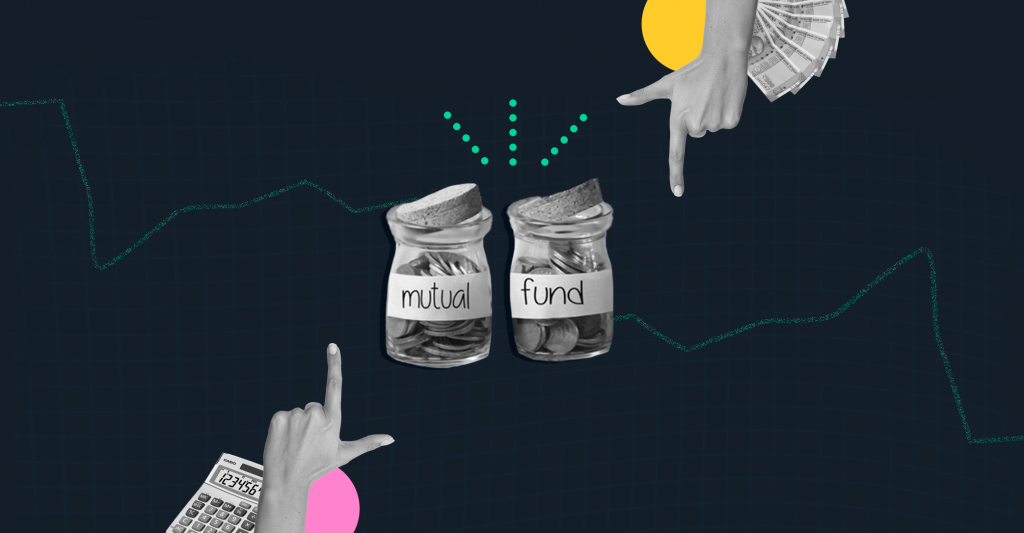Last Updated on Sep 1, 2021 by Manonmayi
Mutual fund investments can help you accumulate attractive returns through a diversified and market-linked portfolio that is professionally managed. There are different types of mutual fund schemes that promise to cater to your specific investment requirement and strategy. However, just putting money into mutual funds is not enough to ensure you achieve your investment goals. You need to monitor the performance of your schemes too.
This article covers:
- What is mutual fund performance?
- Why should you track mutual fund performance?
- How to track mutual fund performance?
Table of Contents
What is mutual fund performance?
When you invest in mutual funds, what you get is units of the scheme. The traded price of each unit of the mutual fund is determined by the Net Asset Value (NAV). This NAV changes every day in line with the price movement in the different securities that the fund has invested in.
NAV plays the apex role in the performance of mutual funds. It is calculated by dividing the total value of all the cash and securities in a fund’s portfolio, minus any liabilities, by the number of outstanding shares.
NAV = Fund assets – Fund liabilities
Number of outstanding shares
The increase in the NAV from the time of investment is the profit an investor makes. Higher the NAV growth, better the performance of the fund!
That said, the absolute value of NAV is not the only indicator of the mutual fund performance. The rate of growth that signifies the returns from the investment is a more important aspect as the NAV changes on a per-day basis. Before we get into the details of how to track mutual fund performance, let’s look at why it is necessary to track the performance.
Why should you track mutual fund performance?
Tracking mutual fund performance is important for both existing and new investors. Here are the reasons why:
1. New investors can choose the best scheme
Don’t you want to invest in the best mutual fund scheme? Given the plethora of schemes available in the market today, you may need to compare different schemes and then pick one that is suited. The fund performance is an important criteria in screening that helps you select schemes that have been consistently giving good returns so that you can get the bang for your bucks.
2. Existing investors can review their investments
By checking the mutual fund performance, you can see if your investment is giving you the expected returns. You can then either supplement your investment by adding more units and/or stay invested in the scheme, or you can switch to a more profitable scheme. You may even redeem your investments altogether. Tracking the fund performance is, therefore, important to make key investment decisions.
How to track mutual fund performance?
There are different tools and parameters that are used to track the performance of a mutual fund scheme. Here is a list of the most common ones:
Mutual fund ratios
Mutual fund ratios are technical tools that help you assess the performance of a mutual fund scheme. You can track the fund performance in absolute or numerical figures that helps you judge the scheme correctly. Some of the most common ratios that you can use include the following:
1. Alpha:
In mutual funds, alpha is a number that shows how well the scheme has performed with respect to its benchmark index. If the alpha is positive, the scheme is said to have surpassed its benchmark index. The higher the alpha, the more lucrative the investment option is.
Here’s a simple example to understand the concept of alpha. Say, a mutual fund scheme follows the Nifty 50 benchmark. Over a specified period, Nifty 50 yields a return of 10% while the mutual fund scheme yields a return of 12%. In this case, the scheme would have an alpha of +2, which indicates the scheme’s performance to be good.
2. Beta:
Beta shows the volatility a mutual fund experiences in relation to the benchmark index. A Beta of one indicates that the fund moved exactly in tandem with the market. If the Beta is higher than one, it means the fund was more aggressive in its approach than the benchmark index while a Beta of less than 1 means that the fund’s composition experienced lesser price fluctuation than the benchmark index the fund tracks.
A Beta could be used as a measure of the risk profile of a mutual fund and investors may use this as criteria while picking funds suitable to their risk appetite. The lower the Beta, the lesser the fund’s price fluctuation in a trade session, in comparison with the benchmark index.
3. Sharpe Ratio:
Everyone loves an investment that can give you maximum returns for minimal risk. The Sharpe ratio helps determine the risk-adjusted returns of a mutual fund scheme. It shows the returns that you could earn for the amount of risk that you face when you invest in a scheme. The higher the Sharpe ratio, the more your potential returns are from the investment. So, try and choose funds that have a high Sharpe ratio for the best returns.
Historical returns
A very simple way to check the mutual fund performance is to check the historical returns of the scheme. Historical returns act like scorecards for mutual fund schemes allowing you to check their returns over a specified time period.
When looking at historical returns, you should look for consistency too to ensure that the scheme has strong fundamentals and that any spike in returns was not a one-off occurrence. Comparisons over longer time periods of 5-15 yrs are considered better indicators of performance than comparisons over shorter time frames.
Portfolio composition
Portfolio composition tells you what the mutual fund scheme is made up of. Just like choice ingredients contribute to a delectable palate, a well-diversified and quality pickings of a mutual fund reinforces your investment portfolio and makes it profitable.
Check the main holdings in the portfolio of the scheme you choose to invest in. Ensure that the scheme invests in quality assets that can weather out short-term market volatilities and generate attractive returns in a stable and growing market, in line with your risk profile and investment strategy.
Expense ratio
Mutual fund schemes incur various kinds of expenses on maintenance, administration, and fund management. These expenses are charged from investors and the expense ratio depicts the overall expense of the scheme. The expense ratio reduces the effective NAV of the mutual fund scheme, thereby impacting your returns.
So, look at the expense ratio of the scheme that you are investing in. Try and opt for schemes with a lower ratio for higher returns. This information is generally published upfront in the offer document and is also available on the fund’s website.
The peer factor
Lastly, to track mutual fund performance, compare the scheme against its peers’ performance, i.e. other schemes in the same category. You want to ensure you have the best of the lot. The important thing here, however, is to ensure that you compare apples to apples. For example, if you are comparing tax-saving schemes, compare ELSS schemes across mutual fund houses to assess the fund performance of a particular scheme. It may not yield you the right results if you pitch an ELSS scheme against a large-cap fund.
These are some of the popular ways to track mutual fund performance. You can use one or more of these ways to judge whether a scheme is worth your hard-earned money.
Do your due diligence when investing in mutual fund schemes as well as when you review your investments. Track the fund performance to measure the profitability of the schemes and subsequently make informed investment decisions. Happy investing!




